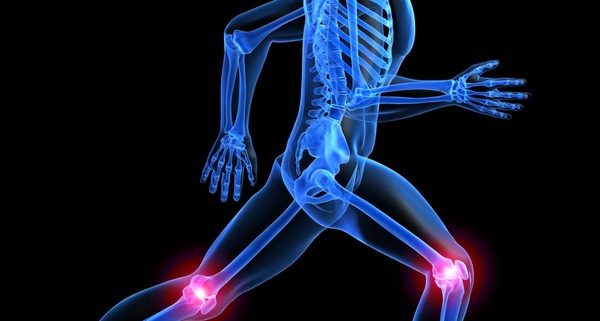Patellofemoral Syndrome. What the latest research tells us.
By Scott Simpson Saanich Physiotherapy + Sports Clinic
Anterior knee pain has been shown to affect 1 in 4 of people in general population with increases in athletes (McConnell), likewise a study by Almedia, found that the problem affects 7-40% of adolescents and young adults. The systematic review of the literature by Collins et al. suggest that there are a multitude of different treatment techniques being attempted, many of which are being shown to be ineffective. Theories also abound about what may be the underlying causes of the injury, including that it might not be the patella but the track it sits on.
To get a better understanding of why our treatments might not be as effective as we would like we need to try to derive a reason why this syndrome exists in the first place. There have been many theories put forward as to the cause of anterior knee pain. These include: Weak Hip, Q-angle, Iliotibial band,Vastus medialis insufficiency, Vastus lateralis tightness, Excessive pronation, Tight hamstrings foot mechanics, Tight gastrocnemius, Patella alta, Patella baja and Patellar orientation: Glide, Tilt (M-L, A-P). Blah. Blah. Blah. Given the multitude of factors that might contribute to anterior knee pain as well as the various locations around the knee where pain tends to present it is unsurprising that a multi-modal treatment protocol might be needed to maximize results with treatment. We must look at this as a syndrome and realise it is unlikely to find a specific cause. Considering this concept it is also unlikely that imaging studies would be of any additional benefit for this condition.
The systematic review by Collins et al came to some interesting conclusions. Findings from this review indicate that multimodal physiotherapy, compared with a placebo intervention that controls for therapist-patient interaction effects, has the best evidence for reducing AKP using a nonsurgical approach. Based on their review it was found the two most successful RCTs had identical multimodal programmes, and incorporated interventions targeting local factors (patellar taping, patellar mobilization, vasti retraining with EMG biofeedback),proximal factors (gluteal strengthening) and global factors (lower limb stretches). In other words they attacked all of the plausible causes listed above rather than focus on just one of them. Of the 48 studies they looked at The Kujala Patellofemoral Score was used in 11 of them. This scale encompasses pain, function and other symptoms, has been shown to be reliable, valid and responsive in Anterior knee pain.
A study by Khayambashi of 28 females with patellofemoral syndrome looked at the specific effects of isolated hip abductor and external rotator strengthening. They found it was effective in improving pain and health status in females with PFPS compared to a no-exercise control group. Based on their study, the incorporation of hip-strengthening exercises should be considered when designing a rehabilitation program for females with PFPS. It should be noted that they used the WOMAC, VAS and handheld dynamometer as outcome measures. So it would be challenging to follow their specific protocols. It was also interesting that they performed both open chain and closed chain hip exercise, when the review by Collins et al found closed chain to be superior. Finally, it must be remembered that this study was only on females and it might not be possible to extrapolate this data to use on male patients.
Overall anterior knee pain is a relatively common condition that is particularly common in younger active patients. It is difficult to isolate the specific cause of impairment even with the use of imaging studies. Therefore, we need to use the best evidence to provide a multi-modal treatment approach that integrates several impairment based diagnostic factors.
Collins N, Bisset LM, Crossley KM, Vincenzino B. Efficacy of Nonsurgical Interventions for Anterior Knee Pain Systematic Review and Meta-Analysis of Randomized Trials. Sports Med 2012; 42 (1): 31-49
Khayambashi et al. The Effects of Isolated Hip Abductor and External Rotator Muscle Strengthening on Pain, Health Status, and Hip Strength on Females With Patellofemoral Pain: A Randomized Controlled Trial. J Orthop Sports Phys Ther 2012;42(1):22-29



